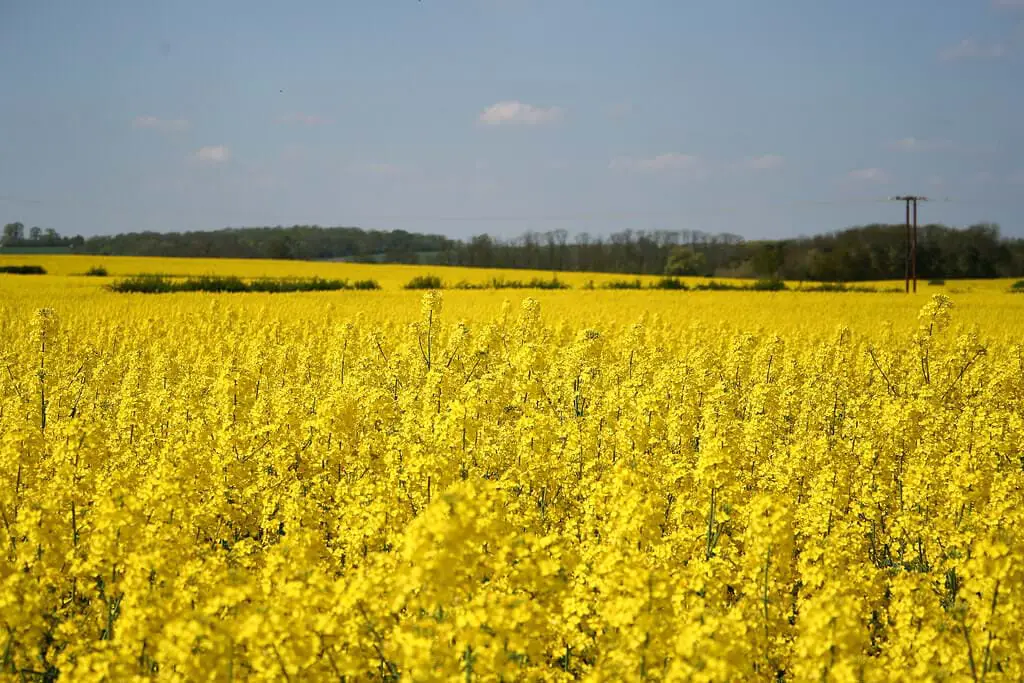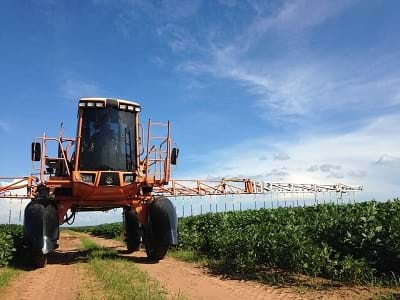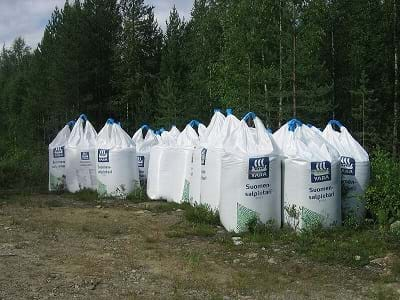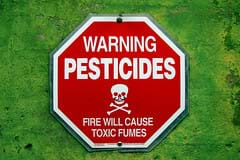15 Monoculture Farming Benefits and Disadvantages You Need to Know
Is Single Crop Planting A Good Or Bad Thing?

What is Monoculture Farming? Well, it is those large farm areas that only have one type of crop growing on them.
Monoculture Farming Basics
Why Do We Use Monocultures
Traditional methods of farming with multiple crop variations(polyculture) are not as efficient for getting harvested. So over the last 50 to 70 years, many farms have moved in favor of monoculture crops.
By switching to a single crop, it allows farmers to maximize the automation of agricultural machinery.
The original Monoculture technique involved planting a single type of crop, in the same field year after year.
The most massive monocrop operation I could find has been in use since the 1840s in England. Wheat has been grown continuously in these fields with no other crop types.
Where Monoculture Crops Get Used
Many of our monoculture fields in North America are not for humans. Most of the corn goes to feed livestock, and the creation of bioproducts(fuels, plastics, etc.).
It is believed that only about 20% of the corn grown in North America is used to feed people.
The demand for meat is one of the primary reasons for the mass-scale use of monoculture agriculture. Around 50 percent of soybeans and 60 percent of corn produced by the United States goes to feed our livestock.
Now that we got all that out of the way. Keep reading to see all the pros and cons we could find from single-crop farming.
Advantages of Monoculture Farming
High Efficiency
The crop type selected by the farms will play to the natural advantages of the local climate and its soil conditions. By using proper selection methods, farmers reduce their chance of having weather conditions impact the yield of the crop.
Farms in the U.S and Canada commonly switch between corn and soy crops each year.
Soy is considered a nitrogen-fixing plant. It returns the nutrient to the soil. Corn, on the other hand, is essentially just a nitrogen stealer.
By alternating between these two crops, it helps to prevent over depletion of this vital nutrient and keeps our soil more healthy, reducing the number of fertilization chemicals needed.
Simplifies the Farming Process
The reduced complexity of raising a single crop is also proving to be highly beneficial to the farming process. Farms only need to learn about and take care of the specific needs of a single plant. Nutrient deficiencies are much simpler to notice and correct.
The farmer will not run into situations of plants requiring different nutritional mixes. So they can mix up one batch of fertilized water to feed the entire crop. Automating the watering of the fields is also now possible.
Easier Pesticide Selection

When the use of pesticides is required, you only have to find a type that will not harm one plant type. Only having to worry about one plant makes it easy to find suitable Pesticide/Herbicide.
Speeds up the Planting of the Crop
Since monocultures use a uniform crop determining the spacing to plant the seeds between one another can be easily calculated maximizing space use. Equipment only needs to be configured once and then can prepare the entire garden bed.
The farmers can then use a seed planting device to walk the fields depositing each seed in the ground. Knowing each plant will get optimal space it requires.
Bigger Harvest
For people looking to maximize the yield of their crop, monocultures allow precise placement of plants.
Knowing how the crop will grow, there is less chance of plants overcrowding each other.
For some crops like grapes, overcrowing can results in mold problems next. Once mold sets in, it can be disastrous to the final usable yield.
Caring for the crop is significantly easier as any nutrient deficiencies are likely to appear in a large majority of the plants. The uniformity allows farmers to identify problems quickly. Quickly reacting to the crops problems ensures it can get the chance to grow to its full genetical potential.
Increase Profits
By focusing on crops that can fetch the highest price with the smallest use of their land area can help farmers increase their profit margins.
From their perspective, it would make the most sense to focus on just this one crop type only.
Reduce Workforce Requirments
Because all of the agriculture equipment can get optimized to the specific crop, a large amount of the process can now be automated.
From placing the seeds, watering the fields, and even harvesting the end product machines can be included to reduce the amount of human work required to get performed.
Disadvantages of Monoculture
Why Are Monocultures Bad
Weaker Against Insect Attacks
If you have two fields(one monoculture, one polyculture) walk away and leaving them to their own defenses, the monoculture filed will attract a significant amount of more pests.
By adding a mix of different genotypes of the same crop species with varying levels of nutrient requirements, you can help prevent attracting as many insects.
Different genotypes of the same crop help to add diversity for the crop. While still keeping the consistency of the final product that will get sent to the consumer.
More farms are currently utilizing this practice, planting four to seven hybrid types to manage field variability, disease, insect resistance, and harvest dates.
Soil Health
When only a single type of crop gets planted in the same soil, certain nutrients become depleted over time.
Different crops require a different ratio of minerals.
Reduced soil health also increases the number of fertilizers a farm needs to use to add the required nutrient levels back into the ground.
By alternating crops or growing many different variations at once, you reduce consuming any one specific mineral.
Current estimates put our average soil depletion rates on monoculture farms at greater than 13 percent. Unfortunately, this percent is larger than the maximum amount we can replace naturally.
Monoculture Farming And The Environment
High use of Fertilizers

Many polycultures use ground cover crops and plants like legumes(nitrogen restorers) to improve the nutrient content of the topsoil and keep soil health continually at optimal levels. While with monocultures, the soil will continually degrade year after year. The land will continue to grow a monoculture crop every year.
But the nutritional value of the produce collected slowly degrades over time(as shown with specific English wheat field soil samples).
Alternating with different crops is a simple way to help to maintain the integrity of the soil in two ways.
The first is the different nutrient requirements of each crop. If one year a high nitrogen crop is grown, the next should use a plant that requires a lower level or even nitrogen or even better nitrogen helpers like legumes.
Legume crops, like jack beans and velvet beans, contain specific bacteria in their roots. The bacteria helps to convert the nitrogen captured from the air into a useable form of nitrogen in the soil(a natural fertilizer).
Doing this could also help reduce the number of fertilizers that would need to get used on the farm fields later.
Ideally, we want the root depths of the different plants planted each year to vary. By choosing plants with varying root depths, it is easier for the soil to stay healthier. By choosing plants with varying root depths, it is easier for the soil to regain its nutritional values year over year.
Water And Air Pollution
Fertilizers
Because pesticides and fertilizers get used on the fields, it is causing harmful effects on our environment.
Nitrogen fertilizers break down into nitrates that travel easily through the soil. Moving easily through the soil increases the chance of it contaminating our groundwater where it can remain for decades.
Even some fields that do not use any fertilizers are still finding high levels of nitrogen getting leached from surrounding fields that use them.
Pesticides

Pesticides will leach both into our soil and also to parts of the plants(most commonly their laves). Groundwater contamination has been linked to gastric cancer, birth malformations, hypertension, and stomach cancer. These chemicals can also find there way into our waters, causing problems for aquatic life. Wildlife that drink from these waters can also get harmed.
Bees, in particular, are suffering from the mass use of monoculture agriculture practices.
Bee colony collapse caused by pesticides(used by many monocultures) has been rated as there number one cause.
Water Use
A large amount of water is needed to irrigate the crops properly.
Since monocultures do not use any ground cover crops(more are starting to), they quickly lose large quantities of topsoil moisture, especially on a dry, hot sunny day.
All the water loss requires these fields to get watered many more times than their polyculture counterparts.
Fossil Fuel Reliance
Because of the scale of these farms and the amount of machinery used in the automation, they generally have a heavy reliance on fossil fuels.
The sorting, packaging, and transportation(from local to internal produce) will also require large amounts of energy.
The industrial model we currently use is resulting in high levels of greenhouse gas emissions because of this.
Over Production of Crops
The Marketing Loan Program states that if prices on certain crops fall below a specific price point, farmers will get reimbursed from the U.S. government.
With the addition of the policy, it has caused farmers to continue increasing production of specific crops.
In 1996 the soybean price point increased from $4.92 to $5.26 a bushel. As a way to capitalize on this, farmers planted an additional 8 million additional acres of soybeans. All this increased production caused the soybean market price to fall by approximately 30 percent. Despite this price drop farmers made significantly more money since the reimbursement program still paid them at a higher rate.
Because of these conditions, overproduction of certain crops will continue to happen. Overproduction causes market saturation and artificially lowers the price.
Finale Note
Unfortunately, it is not just GMO fields using this method either.
Many organic farms have seen the benefits Monoculture Farming has to offer. So now, many large scale organic farms are also starting to focus on larger areas with a single crop type.
Luckily most smaller organic farms will grow a more substantial variety of plants mixed in together.
More massive Industrial Monoculture Farms are also now commonly adopting the technique of using ground cover crops.
Many North American farms will use a variation of the monoculture technique where they will cycle between 2 or 3 crop Types. So the first year they might grow nothing but corn, the next nothing but soybeans, etc.
Each year the crop they grow will also use 4 to 7 different genetic variants of the same plant.
The rotation of different crops is to help prevent some of the adverse effects observed in England's soil where Monoculturing gets used.
Similar Articles
What is Intercropping and Crop Rotation
Green Manure For Clay Soil
Impact of Monoculture on Food Security
[1]Organic agriculture is going mainstream, but not the way you think it is - http://theconversation.com/organic-agriculture-is-going-mainstream-but-not-the-way-you-think-it-is-92156
[2]Why insect pests love monocultures, and how plant diversity could change that - https://www.sciencedaily.com/releases/2016/10/161012134054.htm
[3]Legumes can Reduce Need for Nitrogen Fertilizer - https://m.phys.org/news/2010-03-legumes-nitrogen-fertilizer.html
[4]Impact of pesticides use in agriculture: their benefits and hazards - https://www.ncbi.nlm.nih.gov/pmc/articles/PMC2984095/
[5]Negative Effects of Chemical Fertilizers - https://agrihunt.com/articles/fertilizer-industry/negative-effects-of-chemical-fertilizers/
[6]Monocultures: The Myth…the Reality…the Future - https://monsanto.com/innovations/biotech-gmos/articles/monoculture-farming/
[7]MONOCULTURES IN AMERICA: A SYSTEM THAT NEEDS MORE DIVERSITY - https://blogs.umass.edu/natsci397a-eross/monocultures-in-america-a-system-that-needs-more-diversity/
[8]How the Growth of Monoculture Crops Is Destroying our Planet and Still Leaving us Hungry - https://www.onegreenplanet.org/animalsandnature/monoculture-crops-environment/
[9]Negative Effects of Chemical Fertilizers - AgriHunt. https://agrihunt.com/articles/fertilizer-industry/negative-effects-of-chemical-fertilizers/
[10]Effects of Chemical Fertilizers - Sustainable Baby Steps. http://www.sustainablebabysteps.com/effects-of-chemical-fertilizers.html